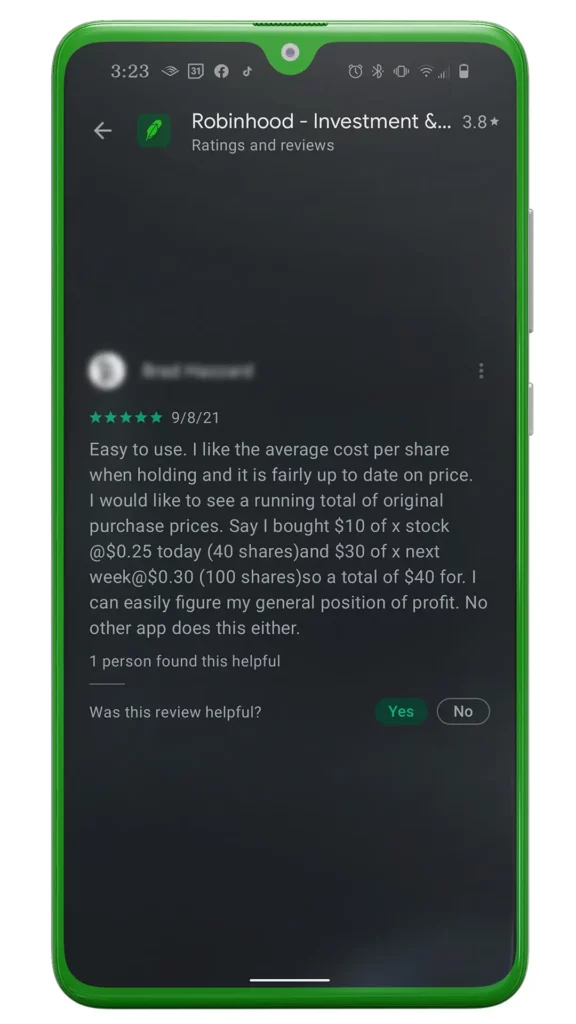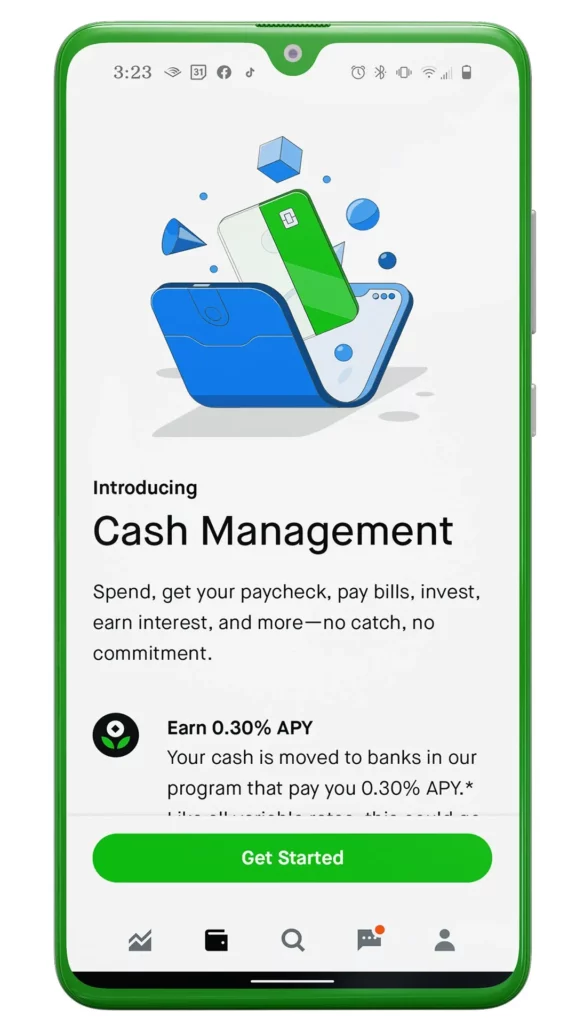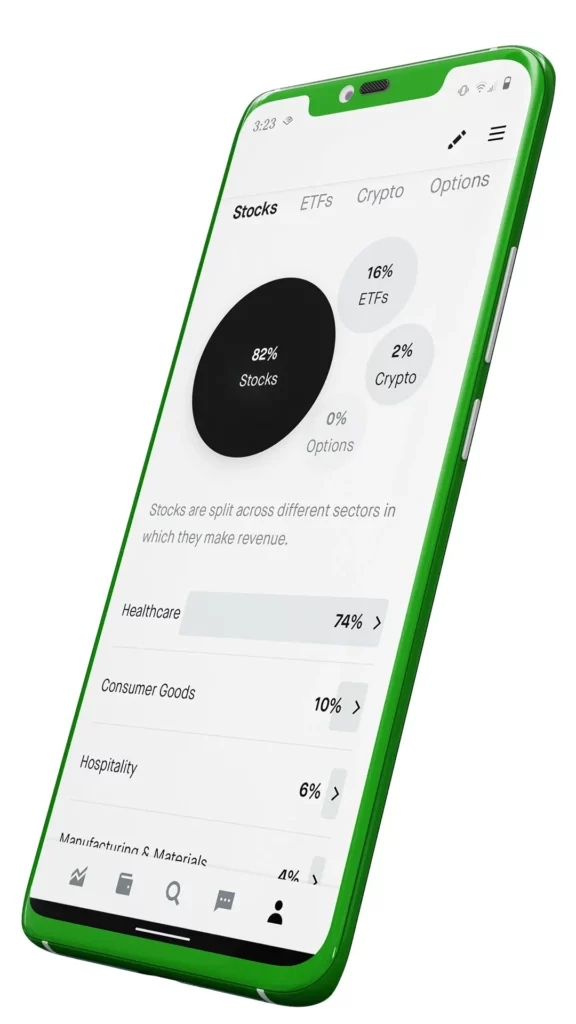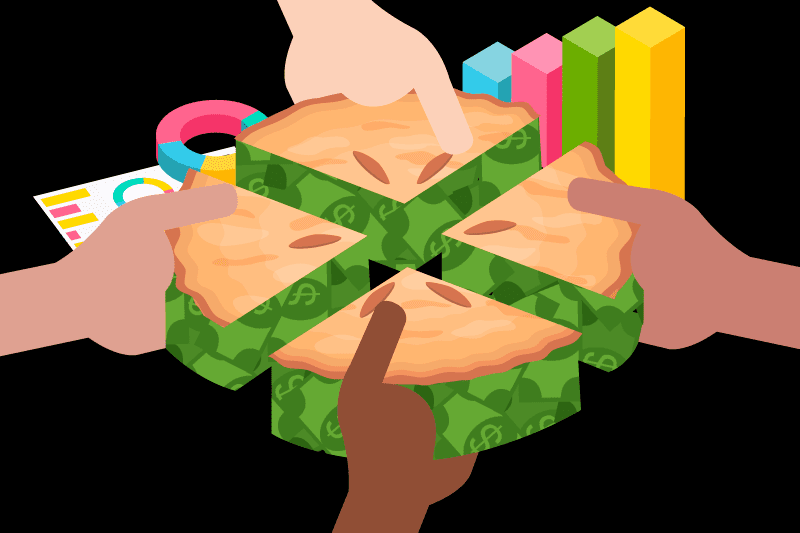Is Robinhood's Investing App Best For New Investors? We Investigate

The Robinhood trading app has been a hot commodity in the world of online brokers since its debut in 2013. It in many ways pioneered the idea that stock trading is less about the elites on Wall Street and more about the regular citizen who can finally take their financial destiny into their own hands. Overall, Robinhood has had a big role to play with this drastic shift underway in the way wealth is gathered and managed.
Robinhood made a name for itself as an intuitive, easy to use investing mobile app that anyone can use. However, it’s had some stumbling blocks along the way, leaving users confused about if Robinhood is a good investing app to use. We’re going to take a look under the hood and see if the Robinhood investing app is worth using to manage your investments.
Table Of Contents
Robinhood Review: My Experience As A Beginning Investor
Tips For Beginner Stock Investors
Robinhood Review: Pros, Cons & Who Should Use It
The Good Stuff About Robinhood
The Ugly Stuff About Robinhood
Robinhood Review: My Experience As A Beginner Investor
I started using Robinhood back in 2017. I didn’t have much money to put in at first, but at the suggestion of my money and investing savvy life partner, I thought it was a good place to start. I started by putting in the spare cash I had, mostly from holiday and birthday gifted money (thanks mom!) which was only about $50.
From that initial $50, I bought three shares of Snapchat (SNAP) and just had the “leave it and forget it” mentality. All I wanted to do was learn a little bit about what investing could do for me over time.
One month later I had made $3.75. Not much, but not bad considering if it had been in a standard savings account I would have earned essentially nothing with the average savings interest rate being .06% at the time. Besides, I went into this knowing that investing is about thinking for the long term, and not stressing about short-term gains and losses.
Investing For The Long Haul

Fast forward, after honestly forgetting about it for a while, I came back to Robinhood to put a little money away in some companies I had a particular interest in when they went public. I didn’t see a return so that got me flustered and frustrated.
But a little while later in early 2020, just as the world was on the cusp of the pandemic, I began doing more company research and took a leap of faith. I invested some cash into three biotech companies — Inovio, Gilead Sciences, and Moderna. It would turn out that Moderna (MRNA) would be my greatest triumph.
A year and a half later, after a reskilling journey that brought me to working and writing for yours truly, The Money Manual, I have taken some investing lessons to heart and am more actively investing. I decided in the summer of 2021 that I wanted to diversify and set up recurring investments. I now afford myself $35 per day into eight stocks, ranging from $1 per day (SBUX) to $10 per day (QQQ). Since July 2017, I have seen a 45.12% return (as of the date of this writing.)
Of note, the stocks I am mentioning are in no way recommendations, but rather I just wanted to provide some background on my investing journey.
If you would have told me when I started this that I would have made such a return in just a few short years, I wouldn’t have believed you. But now, I personally cannot wait to see where my investing journey will take me. Between my investing apps, and my 401(k), I think I can achieve what I never thought I could before: financial freedom.
Robinhood has definitely made it easy to invest as I’ve gotten started. The recurring daily app setting on its own makes it super simple to put just a couple bucks away every day. For example, instead of going to Starbucks every day and spending $3 on a drink, I can easily set it up to have $3 put into the stock every day. If I had done this 5 years ago, I would have made a 110% return.
I cannot express enough how fantastic the fractional share offerings on Robinhood are. I could never have afforded a full share of Netflix ($588.18 as of the date of this writing) for example, but I can definitely afford to put a couple bucks in every day.
I love that I can check on recent news regarding my particular stocks and I can see what the Bulls and the Bears are saying about some of the stocks that are available. I can see if they recommend buying, holding or selling and decide what is best for me.
And as far as deciding what future stocks I want to invest in, I utilize Robinhood’s lists of what is offered in different categories such as the 100 most popular stocks or ETFs. I can also easily see the balance of my portfolio and make sure I’m properly diversifying my investments.
My final favorite feature of Robinhood is how it rewards me for inviting other friends and family to use it with a free stock that can be worth up to $500.
One issue I have with Robinhood has to do with its charting feature for the stocks I am invested in is that the granularity is set to 1 day, 1 week, 1 month, 3 months, 1 year and 5 years. Now, these do seem to be pretty good markers, and once I have held an investment for a little while, I mostly just pay attention to the 3 month and higher patterns, but it would be nice if there was a time limit that could show the full life of a stock from when I started investing up to the present. It would also be nice to see an option to choose the timelines I could look at.
Robinhood Review: Pros, Cons & Who Should Use It
There are many pros and cons to the Robinhood investing app. The biggest pros for the Robinhood investing app revolves around how generally user-friendly the app is and how accessible it makes investing for the common person.
There are no account minimums to maintain, and fractional shares and instant deposits are very handy features to utilize. Instant deposits give you the ability to purchase a stock without having to have funds in your Robinhood account in that moment — Robinhood has you covered until your funds transfer from your connected bank account, so you can make a purchase right away.
These features make basic investing accessible to anyone with a phone or internet connection. There is also the added perk of earning a free stock for referring the Robinhood app to friends and family.
The biggest cons for the Robinhood investing app relate to the lack of educational resources for newbie investors, as well as the lack of features for more advanced traders.
For those who are already experienced with trading, it’s likely to be in your best interest to go for the Gold and sign up for Robinhood Gold membership in order to take advantage of professional research and trading tools.
There are also no retirement accounts unfortunately and Robinhood fails to offer the ability to name a beneficiary (though you can name a trusted contact).
Fractional shares
Instant deposit
Earn 5% APY for Robinhood Gold Members or 1.5% for non-Gold members on your uninvested cash with a Cash Management account
Free stock for referring friends and family
No account minimum
Streamlined interface
Cryptocurrency trading
Commission-free stock, option, ETF, and cryptocurrency trades
IPO investing available
Margin investing
Cash management accounts
Website is easy to navigate
Fast account opening
Set up customized news and notifications to stay on top of your assets
Account Protection: Robinhood Financial is a member of SIPC. Securities in your account are protected up to $500,000
Lack of investing research and trading tools; can only take advantage of professional research if you’re a Robinhood Gold member
No retirement accounts, joint accounts, education savings accounts, or mutual funds
Limited customer service available only by email or call back
Doesn’t offer automatic transfer on death or allow users to name beneficiaries
Few educational materials
What Should I Know Before Using Robinhood To Invest In Stocks?
There are many things to consider when it comes to your personal finances and investing your money. While there are many investing apps to consider, what should you know before using Robinhood to invest in stocks?
There’s many things that have happened with Robinhood over the years and we’re here to give you an overview of the good, the bad, and the ugly.
The Good Stuff About Robinhood

If you are buying stocks and just want to hold them long term, and you want a very simple layout with an easy to use application, then Robinhood will work just fine for you. It is aesthetically pleasing and simple in a good way. Expectations need to be realistic and one cannot take knowledge and education for granted when delving into the world of investing so make sure you manage your expectations from the get go.
Some of the best features include the ability to buy fractional shares on the app, instant fund settlement, recurring investments and limit orders.
The Bad Stuff About Robinhood

Some of the issues with Robinhood include that the platform can get overloaded on highly volatile trading days. If you try to precisely time a buy/sell you might have a problem which can be a turn off for day traders. They also lack in detailed technical charts. So if you need specific analysis and a reliable platform to buy/sell at a precise time and you need up to the second charts and prices, don’t use Robinhood.
Additionally, customer service is limited to requesting a callback (which they claim typically takes 30 minutes) or you need to email them (which they claim typically takes 1 day for a response).
The Ugly Stuff About Robinhood

There have been some controversial issues with Robinhood in recent months. For example, in Spring of 2021, Robinhood locked investors out of trading for some of the hottest stocks like GameStop and AMC. They got criticized for acting unfairly toward regular investors, and Robinhood was forced to slow trading because it simply didn’t have enough money to hedge against the risks.
In order to survive and keep the company operational, Robinhood raised an emergency $3.4 billion. If they hadn’t taken these measures, Robinhood could have gone out of business. The confidence of the investors in Robinhood’s business model and potential was what kept the company alive.
Another time Robinhood has landed in the news as of late? Sadly, a 20-year-old lost his life to suicide after he thought he owed hundreds of thousands of dollars in a risky options trading bet. After not being able to reach customer support he couldn’t cope.
This event forced a change and the company committed to hiring registered financial representatives to ensure customer questions are addressed quickly and accurately.
All of these controversial issues hasn’t slowed the company down. Their net revenue was $565 million for the quarter ending June 30, 2021, which is more than double what it was a year ago. The company recently went public on July 29, 2021. Since the Robinhood IPO, Robinhood has seen a 27.34% return as of the date of writing.
More Things To Know About Robinhood
Is Robinhood Crypto Good?
Robinhood offers a few different cryptocurrencies. They have the more well known coins such as Bitcoin, Bitcoin Cash, Bitcoin SV. They have Ethereum and Ethereum Classic, and a couple alt coins, specifically Dogecoin and Litecoin.
You can buy and sell these crypto coins within the Robinhood investing app. The crypto offerings are limited but at least it’s a start and makes it easy to put a few bucks in to experiment.
The biggest perk of trading crypto on Robinhood is its lack of fees.
Another perk that was just announced in September of 2021 that Robinhood will start to offer a crypto wallet starting as early as October 2022 (and will be 100% available to all users in early 2022.) This is a great update that will help smooth your crypto investing journey since you can now manage your crypto holdings through a wallet that is within the Robinhood app.
“Robinhood crypto wallets will allow you to move your crypto in and out of your app in a few taps. Send your crypto to other wallet addresses and receive supported cryptocurrencies into your Robinhood account.”
Robinhood
Another recent update is that you can now create recurring investments for crypto. Buy your favorite coins (or fractions of them) on autopilot. Create a schedule and start with as little as $1. So instead of trying to time the market, this feature allows you to grow your holdings easily over time and take the emotion out of the equation.
When it comes to crypto, please remember that cryptocurrency is a highly speculative asset to invest in. It’s great for diversifying your portfolio, even just to experiment, but only invest what you can afford to lose!
Is Robinhood Cash Management Good?

The Robinhood Cash Management feature has its perks. For example you can earn 5% APY for Robinhood Gold Members or 1.5% APY for non-Gold members on your uninvested cash. There’s no monthly fees or minimum balance. It is FDIC-insured through a third-party bank and you can use a debit card.
The drawbacks are that there’s limited customer service options and there’s no cash or check deposits. It’s a fairly new service so use it at your own risk. For all the similarities, it is not a bank account, and in order to actually snag that interest rate on your dollars, users must have a Robinhood brokerage account.
Is Robinhood Good For Long Term Investing?
If my own experience is anything to go off of, with the set it and forget it features Robinhood has to offer (recurring investments, limit orders) you can definitely see some good returns over time without having to worry too much about it day to day. It’s usually the best strategy and Robinhood makes it easy.
Just remember, you need to diversify your portfolio, and not obsess about what is going on every day. Let the waves of the market go ahead and fluctuate, and ride that roller coaster out for years.

Think of it like this: unless the United States has a sudden loss of status in the world, the general trend is up and to the right. You’ll see occasional dips (sometimes big ones like at the start of the Covid-19 pandemic) but it always recovers if you give it time. Check out the chart below to see the 100 year Dow Jones return trend.

Tips For Beginner Stock Investors Using Robinhood
From my experience, once you open a Robinhood account the best features to take advantage of are the recurring investing feature, and fractional shares.
What is a recurring investment?

Recurring investments are the easiest way to invest even just a little bit of cash (aka fractional shares) in at regular intervals. You can set up monthly, weekly, or even daily recurring investments in Robinhood’s investing app. What I do is invest just a couple dollars a day so that by the end of the month I’ve invested about $25 in one of my investments.
Now, I could just do a once a month recurring investment of $25, but then I’d lose out on the potential profits that putting the $1 in per day can get me. And you know that the $1 invested in say, a Starbucks stock, is much more likely to give me a return than the $4 daily latte. Don’t get me wrong, I still love me some pumpkin spice, but I’d rather invest the few dollars than lose it.
Check out this handy recurring investment calculator and play with the numbers to see how much this investing strategy could potentially earn!
What are fractional shares?
Being able to buy fractional shares is the greatest invention in personal finance since the piggy bank. You buy a small portion of a share rather than the full thing. This is something Robinhood makes easy and it’s a great thing to take advantage of.
When it comes to blue chip stocks like Amazon, the average American cannot afford to buy a full share at $3,475.79 (as of the date of this writing). But they may be able to invest $50 to buy .014385 of a share. This fractional shares feature is what is allowing me to put a few dollars into several stocks every day.
What are conditional orders?
Conditional orders are automatic triggers you can set up to instruct the Robinhood app when to execute an order based on the pricing. It can be a recurring investment (my personal favorite!), which will automatically withdraw whatever amount you specify at whatever interval you choose, daily, weekly, or monthly.
What is a stop order (sometimes called a “stop loss”)? A stop order is:
“An order placed with a broker to buy or sell a specific stock once the stock reaches a certain price. A stop-loss is designed to limit an investor’s loss on a security position.”
— Investopedia
Basically this means you can set an automated trigger within the app that will automatically cut your losses at a certain point. You’ll still want to leave yourself some wiggle room for the regular fluctuations within the market. But doing this type of order on you investments will enable you to not have the value drop off a cliff and leave you unaware and therefore unable to stop it.
Think of it like having a friend watching your account for you 24/7 and letting you know when it starts to tank, just in time to help you cut your losses so you minimize your risk. Keep in mind, understanding order types can help you manage risk and execution speed. However, you can never eliminate market and investment risks entirely.
How to set up a Stop Order in Robinhood:

When you go to buy a stock follow this process to create a stop order:
- Hit the gear settings button before you buy
- Select the “Limit order” option
- Set your limit
- Swipe up to execute the order.
- Forget about it!
I suggest you give yourself maybe a 5 to 10% wiggle room to account for regular market fluctuations. Think about what will make you comfortable and how much you can risk to lose.
Set It And Forget It
My next tip is to set it and forget it. Don’t obsess over your investments every single day. It’s good to check in every once in a while, but if you let your emotions rule you and you sit there looking at all the swings in your investments daily, you’ll drive yourself insane.
You need to remember that some days the market will show a downtrend. Heck, it even has some bad months.
But more than likely, you’ll see a return over the long haul. Slow, consistent investments over-time is the winning strategy. Successful day traders are a special breed, and I’m not saying it’s impossible to see a good return through day trading, but it’s much more risky.
Don’t yank your cash out at the drop of a hat. If Starbucks is having a bad day, don’t worry about. Take a long term approach to stocks in order to make the best decisions.
Summary
When it comes to investing apps, there’s a lot of options to choose from. Robinhood is a great choice for beginner investors who are looking to get started with making their money grow. However it may be a bit too simplistic for experienced traders or for people who want a more analytical way of deciding what to invest in.
The Robinhood trading app has had some controversial issues surrounding it but it can still prove useful for people getting started in the world of investing.
The user experience is clean and simple to figure out for most people. It is easy enough to navigate and utilize features such as limit orders, fractional shares and recurring investments that help the user to “set it and forget it.”
Users should be aware of the potential risks of investing and as always, only invest what you can afford to lose! Never trade outside of your means and make sure you do your due diligence about which companies to invest in.
Start growing your money by investing using Robinhood today!
Don’t think Robinhood is quite right for you? Check out our TD Ameritrade review and see if it’s more up your alley.
Be sure to check out our complete guide to investing apps to see what other investing apps may be a better fit for you.








